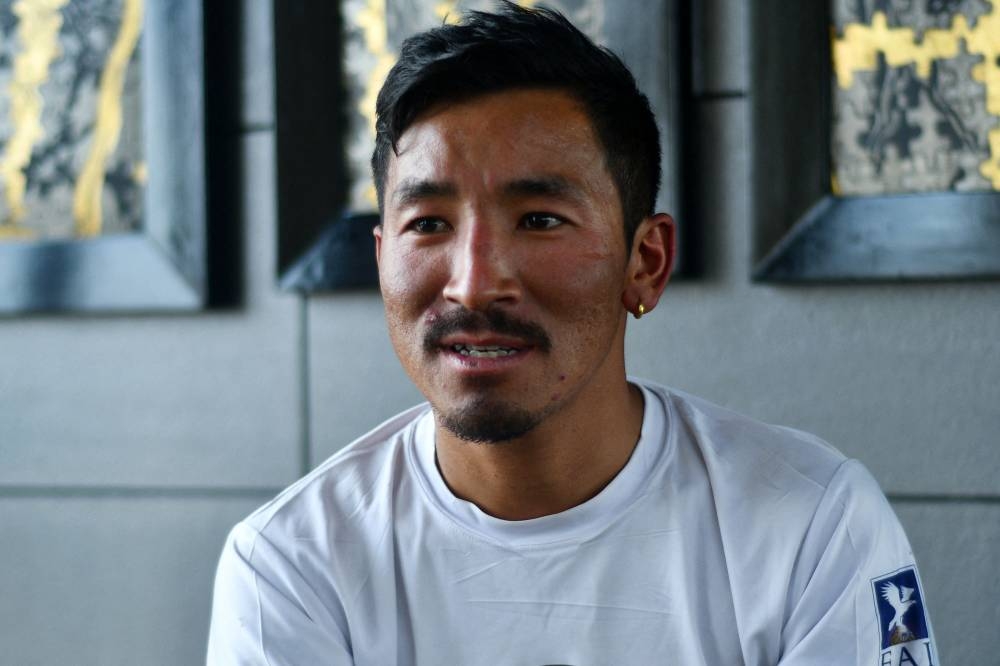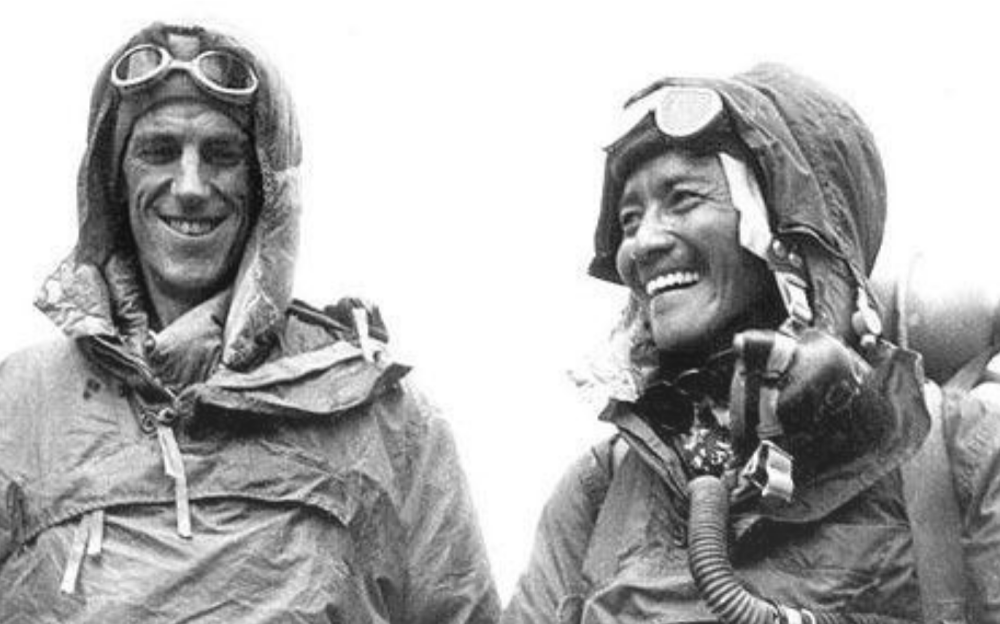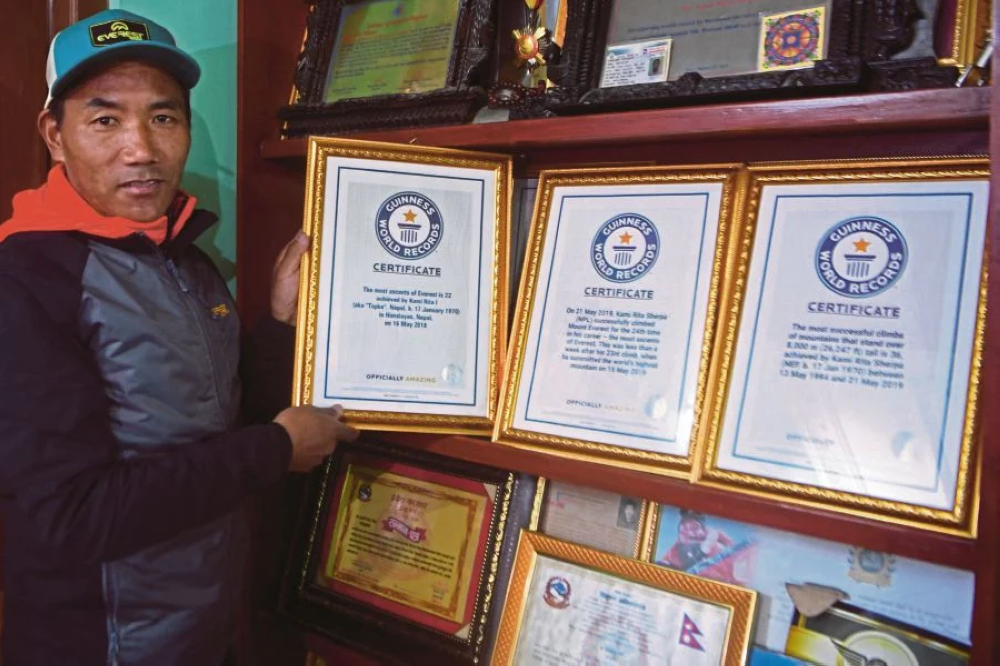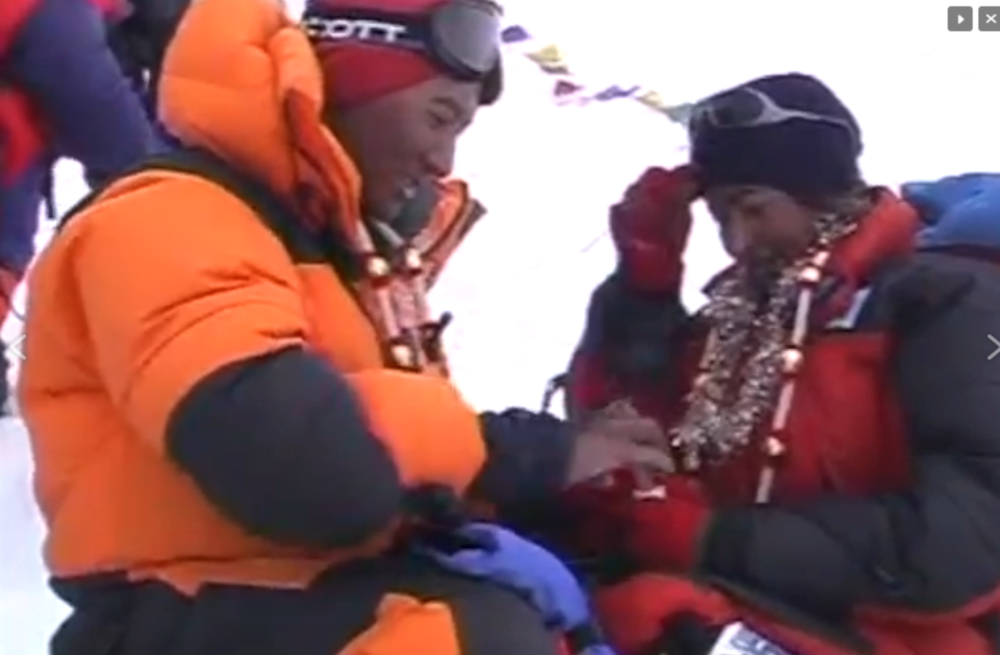Sherpas: Unsung Heroes of Everest

Mount Everest has been making Malaysian headlines for the past few weeks following the tragic death of Kedah Malaysian Civil Defence Force director Lt Col Awang Askandar Ampuan Yaacub and the disappearance of hearing-impaired Muhammad Hawari Hashim.
Whilst the challenging repatriation journey of Awang Askandar and search for Hawari continues, another Malaysian climber T. Ravichandran garnered international attention when a video of him being saved by a Nepali sherpa from the “death zone” on May 18.
The 30-year-old named Gelje Sherpa had hauled Ravichandran, who had been clinging to a rope and shivering from extreme cold weather, 600m down from the Balcony area to the South Col over a period of about six hours, where they met with another guide Nima Tahi Sherpa to join the rescue. Ravichandran was later airlifted by a helicopter from 7,162m high Camp III down to Base Camp.
This was described as a “very rare operation” by Nepal’s Tourism Department official Bigyan Koirala, as it is “almost impossible to rescue climbers at that altitude”.
Gelje, when interviewed by Reuters, said he had to convince his Chinese client to give up his summit attempt and descend the mountain as it was more important to rescue the climber.
Amidst all the rescuing efforts, many are asking - “What are Sherpas?”.
According to Sherpa Adventure Gear, Sherpa is a Nepalese ethnic group renowned for their culture, superior climbing skills and extreme endurance for high altitudes.
They have lived in the country’s high altitudes for generations and long served as guides and porters, whose local expertise been invaluable to tourists visiting the area.
Sherpa translates to “people from the east”, referring to their origins in Khams, Eastern Tibet and although originally nomadic, they began migrating to Nepal in the 15th century, earning a leading for centuries trading salt, wool and rice, herding yaks and cows as well as farmers of potatoes, barley and buckwheat.
The Sherpas of Nepal live in the Solu-Khumbu district, the surrounding area of the Himalayas with recent studies showing they were able to cope with the extremely high altitudes by increasing the number of red cells in their blood thus increasing its oxygen-carrying capacity.
The term Sherpa, being an ethnic group indigenous to the Himalayan region, has mainly been associated with those who assist tourists eager to climb Mount Everest.
Mostly young men, the Sherpa guides are not mere muscles behind the expedition - carrying extra gear such as oxygen bottles, water and food, but also expert navigators amidst freezing temperatures of -30 celsius to -50, as well as negotiate icefalls, avalanches and extreme altitudes.
Sherpas have been described as extremely selfless and humble individuals who do not seek fame or recognition for their accomplishments.
For the Sherpas who are working on teams and had no intentions of to summit where they are employed to port equipment or cook up to Camp 2, their names are often not recorded. But if a Sherpa climbs above 8,000m thus their attempt will be recorded while those who reach the summit, get close to it, take part in a specific rescue or notable event, or suffer an injury or death will be recognised.
Here are some of the most notable Sherpas:
Tenzing Norgay
Tenzing Norgay, also referred to as Sherpa Tenzing was a Nepali-Indian Sherpa mountaineer. He was one of the first two people known to reach the summit of Mount Everest, which he accomplished with Sir Edmund Hillary on May 29, 1954.
Norgay was awarded by the British, Nepalese and Indian government with civilian honours. Nepal named of the Himalayan peaks at 7,916m “Norgay Peak” after him.

Kami Rita Sherpa
Kami Rita reached the top of Mount Everest for the 27th time on May 10, reclaiming the record for the most summits of the world’s highest mountain. He successfully reached the summit guiding a Vietnamese climber.
The 53-year-old had held the overall title since 2018, when he ascended Everest for the 22nd time, passing the previous mark he shared with two other Sherpa climbers, both of whom have since retired.
A guide for more than two decades, Kami Rita first summited in 1994 when working for a commercial expedition and since then has climbed Everest almost every year, several times leading the first rope-fixing team to open the route to the top.
It was later reported that Kami Rita has since left the mountain climbing career, where he was quoted saying “I see no future”, citing perils of the job and a scant safety net.

Lakpa Sherpa
Lakpa was the first Nepalese woman to climb and descend Everest. At 48 years old, she has climbed Everest nine times, more than any other woman climber.
Babu Chiri
Babu is recognised for his two world records relating to Mount Everest. First, he managed to summit for 21 hours without auxiliary oxygen; second, he completed the mountain’s fastest ascent in 16 hours and 56 minutes.
He climbed Everest 10 times but died during his 11th attempt.
Pem Dorjee Sherpa and Moni Mulepati
Pem Doriee is a sherpa mountaineer and has climbed Everest twice. On his second expedition, he was with his girlfriend Moni Mulepati, where they exchanged wedding vows on May 30, 2005 becoming the first to be married on top of the mountain.











